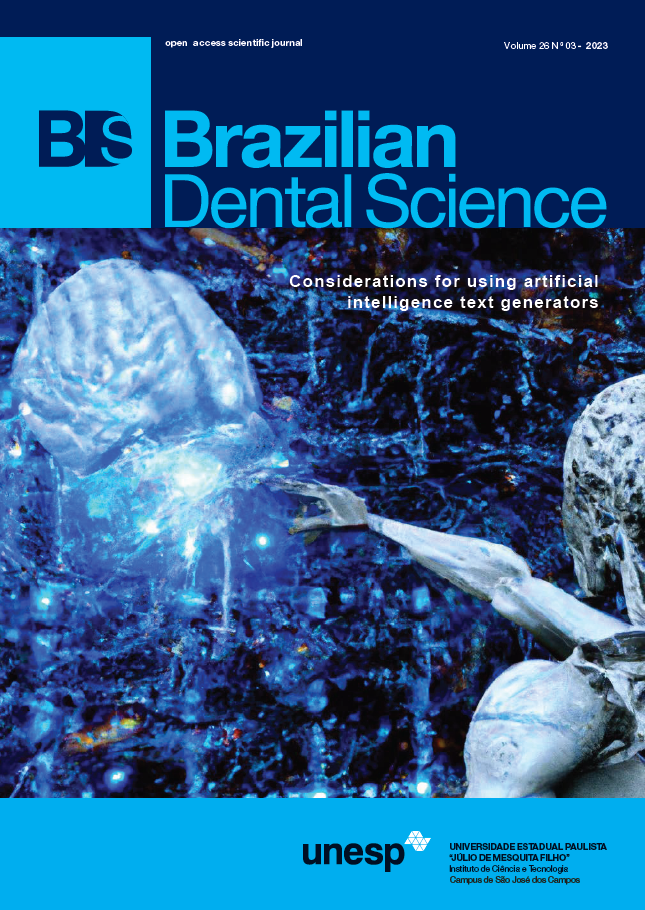Suckermouth catfish bone extract as bone graft raw material for bone-healing promotes bone growth in bone loss
DOI:
https://doi.org/10.4322/bds.2023.e3791Abstract
Objective: This study aimed to evaluate the properties of suckermouth catfish bone extract, which allows it to be adopted as a raw material for bone graft following its graft in an artificial defect of a rat model. Material and Methods: Hydroxyapatite (HA) from suckermouth catfish bone extract was characterized using Fourier-transform infrared spectroscopy (FTIR), and its toxicity was evaluated by Brine Shrimp Lethality Test (BSLT). This material was grafted on artificial defects in rats’ femoral bones, which were observed immunologically by Enzyme-linked immunosorbent assay (ELISA) after one week and four weeks, and radiographically in the second week, and histologically in the second and fourth weeks. Results: FTIR shows that this material consists of phosphate, hydroxyl, and carbonate groups, while the BSLT results show that this material is not toxic. Observations by ELISA showed an increase in the expression of Tumor necrosis factor alpha (TNF-a) in defects with HA in the fourth week. Radiographically the defect did not show closure in the second week. In contrast, histological analysis showed a better bone healing process in the defect, which was applied with the HA of the suckermouth catfish bone. Conclusion: The HA extracted from the suckermouth catfish bone has beneficial properties as an alternative to bone graft raw material and, more investigated needed to support this biomaterial to be used in the treatment of bone loss.
KEYWORDS
Hydroxyapatite; Bone graft; Bone defect; Bone healing; Fourier Transform Infrared Spectroscopy.
Downloads
Published
How to Cite
Issue
Section
License
Brazilian Dental Science uses the Creative Commons (CC-BY 4.0) license, thus preserving the integrity of articles in an open access environment. The journal allows the author to retain publishing rights without restrictions.
=================




























